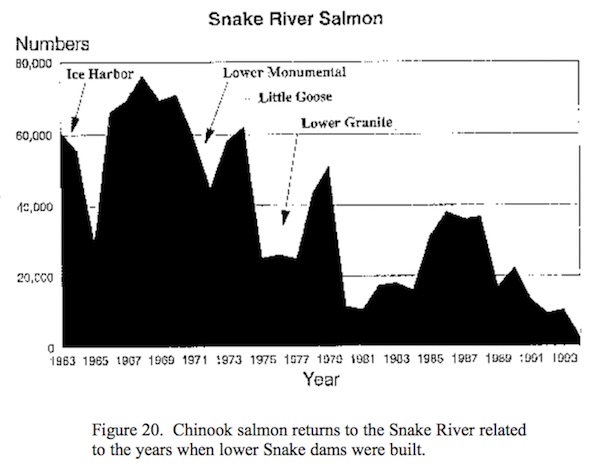forum
library
tutorial
contact

Fish Declined Before Dams
by Gene SpangrudeWalla Walla Union-Bulletin, August 14, 2022
|
the film forum library tutorial contact |

|
Fish Declined Before Damsby Gene SpangrudeWalla Walla Union-Bulletin, August 14, 2022 |
 The discussions about removing and breaching the lower Snake River dams are interesting to follow.
The discussions about removing and breaching the lower Snake River dams are interesting to follow.
Whichever of these options is done, returning the lower Snake River to its natural flow conditions will end both barge navigation and power production on the river. And even though the dams are left in place, their ability to produce power will be negated without some form of water surface elevation difference created between their upstream and downstream portions.
Back in the 1870s, federal reports were being prepared based on investigations being made back then regarding "the decrease of the food fishes" within the Columbia River basin. These reports are available through major libraries, such as the Seattle Public Library.
Long before the lower Snake River dams were constructed, there were concerns being raised about the declining numbers of salmon in the system. The maximum harvest of Columbia basin salmon occurred in 1883, and has been in general decline since that peak harvest. This information is available in published reports as well.
No matter which option is utilized -- be it breaching or removal -- hopefully some thought will be given to the fact the salmon numbers were decreasing long before the lower Snake River dams were constructed.
learn more on topics covered in the film
see the video
read the script
learn the songs
discussion forum
